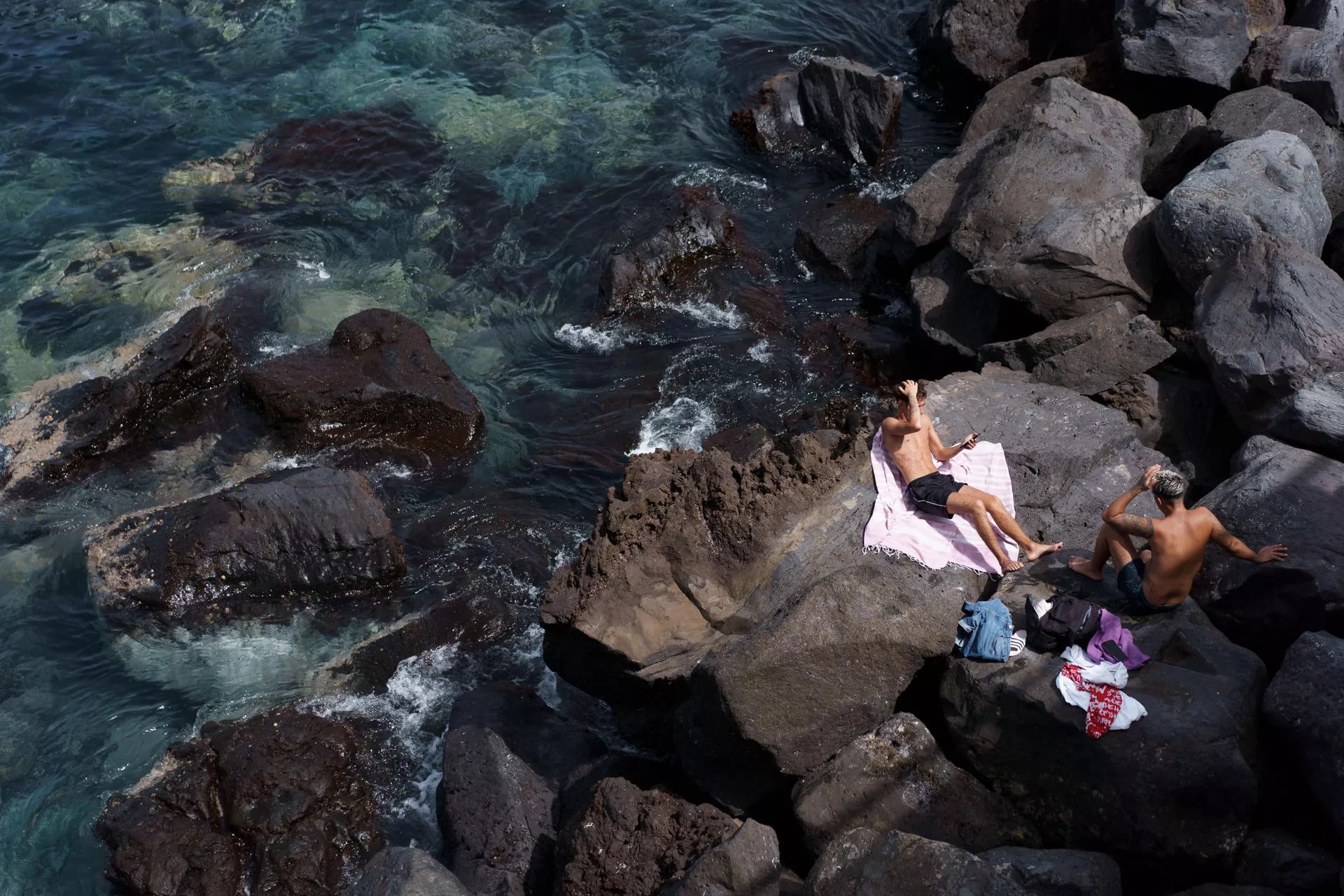
A small gathering of individuals experienced the partial solar eclipse at sundown on Monday from the Teide Observatory, in Izaña (Tenerife), where they had the unique opportunity to witness a phenomenon that could only be observed in Spain from the furthest western islands of the Canary Islands.
To reach their destination, those present at this event, predominantly associated with the Institute of Astrophysics of the Canary Islands (IAC), braved the rain and wind along the serpentine road that ascends from the coast towards the foot of the volcano, traversing the dense sea of clouds enveloping the island.
The mountaintops of the Canary Islands always offer a reward to sky gazers, even if just for a few fleeting moments, so there were very few better vantage points to witness the phenomenon than the Teide Observatory and Roque de Los Muchachos, even further west, on La Palma.
As the sun dipped in the final moments of daylight, at 8:17 p.m. (Canary time), the anticipated moment arrived: just slightly over ten minutes of a spectacle in which the Moon obscured a mere 5% of the Sun.
Despite the somewhat trivial nature of this astronomical event, the excitement was palpable as the realization set in that another one won’t be visible in its entirety in the archipelago until 2187 and 2353, when a total solar eclipse is expected during daytime.
On the flip side, those in the north of Spain and the Balearic Islands will have the fortune to witness it in 2026, and in the south in 2027.
At the pinnacle of the eclipse, emotions surged among the group of individuals who braved the strong winds and chill. Many of them spend their days studying the skies, but that doesn’t diminish their sense of wonder, as was the case with astrophysicist and IAC communicator Irene Puerto Giménez.
Puerto Giménez shared with EFE that, for her, this phenomenon holds great significance, as it “heightens our awareness of the celestial movements” that sometimes elude precise measurement.
“The Earth is rotating in reverse. While we witness the sunset, the Sun is stationary, it is we who are spinning at 1,800 kilometers per hour, while simultaneously observing the Moon orbit the Earth and come between us and the Sun. All of this happening in real-time,” detailed the IAC researcher.
In A Coruña, the other designated location in Spanish geography graced by the eclipse’s trajectory, the cloud cover deprived hundreds of spectators of the spectacle.
O Portiño was a selected spot by the A Coruña residents, renowned for its panoramic views and stunning sunsets.
Over a hundred individuals congregated there in hopes of witnessing the solar eclipse which was total in Mexico, the central United States, and parts of eastern Canada.
Commencing at 9:17 p.m. (peninsular time), the most optimistic enthusiasts had their cameras at the ready, but unfortunately, they were thwarted by the clouded skies obscuring the Sun, despite the day seeing an improvement from the morning which was marked by heavy rain.
The sun did make a brief appearance later in the afternoon, yet it was insufficient to behold this phenomenon.
A Coruña will have another, and more extraordinary, opportunity in two years as a total solar eclipse is slated for August 12, 2026.
The last eclipse visible from this corner of the Atlantic dates back to 1905.















